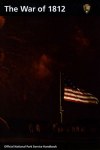Museums and historic sites are caught up in the technology craze as they try to determine the best way to utilize the latest technological enhancement to enrich their interpretation. Everyone can agree that technology can and has improved interpretation by providing different formats to relay information and that technology allows the dispersion of additional material not possible in regular exhibits and text panels. Visitors, especially those age thirty and younger, nowadays expect to utilize their portable devices as they tour museums.
However, I feel cultural institutions might have gone too far in this desire to embrace technology and lost their original purpose for existence. I recently read an interesting article that stated, in effect, if the technological enhancement is more of an attraction than the attraction itself, then it needs to be toned down. I work in the Old Capitol Museum in Jackson, Mississippi. This Greek Revival masterpiece built in 1839 recently underwent a dramatic restoration and contains spectacular views of its stunning rotunda dome, massive portico, majestic spiral staircases, and giant legislative chambers. The museum does contain some technological elements such as videos and touchscreen monitors which help explain the building’s rich and fascinating history, but I am often reminded that the vast majority of our visitors enjoy the more traditional visit to the museum. They admire the fine architecture and also gain an acute understanding of how Mississippi’s history unfolded within its walls. On a regular basis, I am reminded how the building can be awe-inspiring when I see a child twirl in circles as he stares up in wonder at the 94 foot rotunda dome with its elaborate plasterwork. It is those moments when we have truly reached a visitor. And to think, those moments happened without the latest technology.
Museums and historic sites need to emphasize that we contain the real and authentic. That needs to be the focus. If we lose sight of that, then we are moving away from what makes us unique in the first place. If everything can be accessed on your I-Pad or Smart phone, then why bother visiting the actual location in the first place?
CPW












